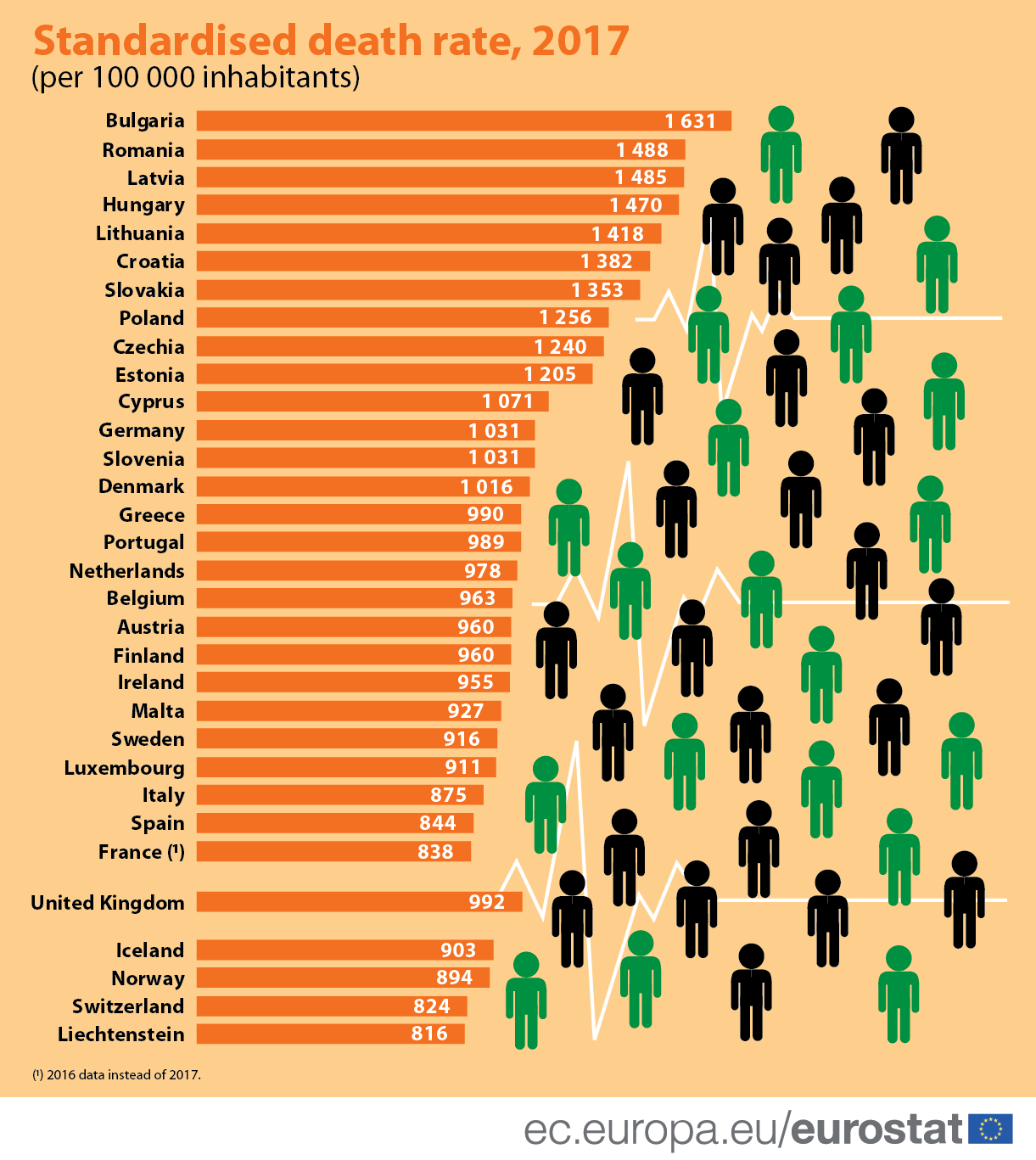In 2017, diseases of the circulatory system were the main cause of deaths in all EU Member States, except in Denmark, Ireland, France (2016 data) and the Netherlands where it was cancer.
Among the EU Member States, the highest share of deaths due to diseases of the circulatory system was observed in Bulgaria (66%) and the lowest in Denmark (23%), while the highest share of deaths due to cancer was observed in Slovenia (32%) and the lowest share in Bulgaria (16%).
Diseases of the circulatory system and cancers together represented more than half of the causes of deaths, ranging from 52% in France (2016 data) to 82% in Bulgaria. After these two diseases, the third main cause of death in most of the EU Member States were diseases of the respiratory system.
Source dataset: hlth_cd_aro
Death rate highest in Bulgaria, lowest in France
To make a sound comparison between countries, the absolute numbers of deaths across the countries need to be adjusted to the size and structure of the population.
With 1 631 deaths per 100 000 inhabitants, Bulgaria had the highest death rate in the EU in 2017. It was followed by Romania (1 488), Latvia (1 485), Hungary (1 470) and Lithuania (1 418).
Source dataset: hlth_cd_asdr2
At the opposite end of the scale, the lowest death rate across the EU Member States was recorded in France (838 deaths per 100 000 inhabitants; 2016 data) and Spain (844), ahead of Italy (875), Luxembourg (911), Sweden (916) and Malta (927).
Note: The European Union (EU) includes 27 EU Member States. The United Kingdom left the European Union on 31 January 2020. Further information is published here.
To contact us, please visit our User Support page.
For press queries, please contact our Media Support.



